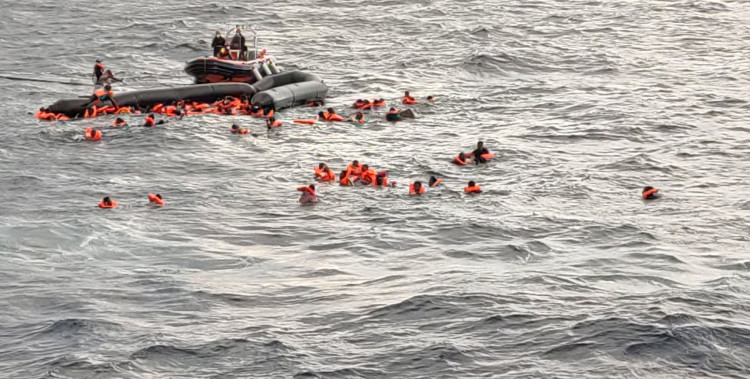In a tragic turn of events, Libya's northeastern region has been devastated by unprecedented flooding, resulting in the loss of thousands of lives and leaving many more missing. The calamity, which struck the coastal city of Derna the hardest, has been described as one of the most severe natural disasters to hit the North African nation in recent memory.
Emergency response teams have been working tirelessly to locate survivors and recover bodies in the aftermath of the flood, which claimed the lives of at least 8,000 individuals and left an estimated 10,000 unaccounted for. Eyewitness accounts and footage circulating on social media paint a harrowing picture of the destruction, with entire neighborhoods washed away, infrastructure in ruins, and cars buried under debris.
Satellite imagery reveals the extent of the damage in Derna, where buildings have been obliterated by the combined forces of water and sand. The city's coastline, once a picturesque sight, now bears the scars of severe erosion. The situation is further exacerbated by the fact that hospitals in the affected areas are no longer operational, and morgues are overflowing, forcing the deceased to be placed on sidewalks.
Heres a video of the flood front cascading down a previously empty riverbed in #Lybia. A flood like this is completely unprecedented in the region and none of the infrastructure was constructed to cope with a flow of this magnitude. Truely devestating #thoughtsandprayers… pic.twitter.com/tnkA1TKrfz — Chace Hahn (@ChacingTheStorm) September 14, 2023
The catastrophe's origins can be traced back to a potent low-pressure system that previously wreaked havoc in Greece. This system evolved into a tropical-like cyclone known as a "medicane" in the Mediterranean. With global ocean temperatures on the rise due to climate change, the Mediterranean's warmer-than-average waters likely intensified the storm's rainfall, according to experts.
Karsten Haustein, a climate scientist at Leipzig University in Germany, emphasized the role of elevated sea surface temperatures in fueling such storms. "The warmer water does not only fuel those storms in terms of rainfall intensity, it also makes them more ferocious," he stated.
Libya's political landscape, already fragmented due to ongoing conflicts since the 2011 uprising against Muammar Gaddafi, has complicated the disaster response. The country is currently divided between two rival administrations: the UN-backed Government of National Unity (GNU) in Tripoli and the eastern-based parliament in Benghazi, supported by commander Khalifa Haftar and his Libyan National Army (LNA). Derna and its neighboring cities, the areas most affected by the floods, fall under Haftar's jurisdiction.
The international community has rallied to provide aid to the beleaguered nation. Countries including Egypt, the UAE, Turkey, Italy, and Algeria have pledged humanitarian assistance. However, the political divisions within Libya pose challenges for aid delivery, with nations having to choose between sending aid to Tripoli or Benghazi.
Despite the political complexities, Tamer Ramadan, head of the International Federation of Red Cross and Red Crescent Societies (IFRC) in Libya, assured that their operations remain unaffected. "We have a good relationship with officials in both governments," he confirmed.
As Libya grapples with this calamity, the world watches, offering support and hoping for the swift recovery of a nation already burdened by years of conflict and instability.






